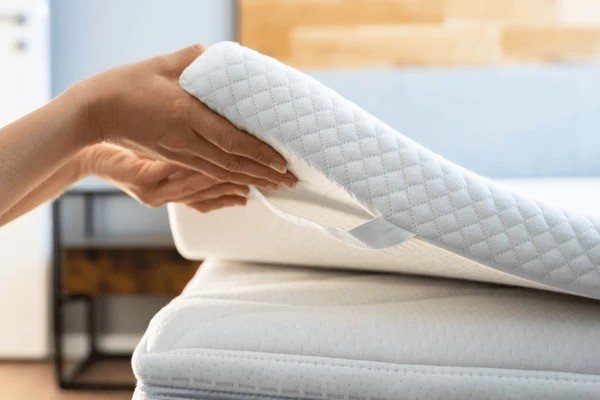When it comes to ensuring your child’s safety during car rides, a booster seat plays a crucial role. Whether you’re a first-time buyer or looking to upgrade, choosing the best car booster seat for your child can be overwhelming. The market is flooded with options, each promising top-notch safety features and comfort. But how do you know which one is right for your family?
In this comprehensive guide, I’ll walk you through everything you need to know to make an informed decision. From safety features to ease of installation and comfort, I’ll break it down for you. By the end of this article, you’ll be well-equipped to choose a car booster seat that fits your child’s needs and ensures peace of mind on every ride.
Table of Contents
What is a Car Booster Seat?
A car booster seat is designed to elevate your child so that the vehicle’s seat belt fits them correctly. As children grow, they eventually outgrow their car seat, but they are still not tall enough for the seat belt to fit properly across their shoulder and lap. A booster seat helps position the seat belt in a way that provides optimal protection in the event of a crash.
Booster seats are primarily used for children who weigh between 40 and 100 pounds (18 to 45 kg) and are usually between 4 and 12 years old, depending on their size and the laws in your area.
Types of Car Booster Seats
Before diving into individual models, let’s understand the different types of booster seats available. The two most common types are:
- High-back Booster Seats
These booster seats offer additional head and neck support. They are suitable for vehicles without a headrest in the back seat. High-back boosters are ideal for younger children who still need extra support and protection. - Backless Booster Seats
These are simpler and lighter, making them easy to move from one car to another. They don’t have the additional back support but still ensure the seat belt fits correctly. These are more appropriate for older children who are tall enough to sit without the extra back support.
Key Features to Look for in a Car Booster Seat
When choosing a car booster seat, several factors need consideration. I’ve broken them down into key features to help you prioritize what matters most:
1. Safety Features
Safety is the most important factor when choosing a booster seat. Look for features that ensure your child is securely positioned:
- Side-Impact Protection: This feature helps protect your child from side-impact crashes. High-back boosters often come with enhanced side protection.
- 5-Point Harness or Seat Belt Guide: Some booster seats still use a 5-point harness system, while others rely on the vehicle’s seat belt. Both systems offer good protection, but it’s important to ensure that the seat belt guide is adjustable and fits correctly.
- Energy-Absorbing Foam: Some seats have energy-absorbing foam that can help reduce the force of a collision.
2. Comfort and Fit
I’ve always found that if a booster seat isn’t comfortable, my child won’t want to sit in it for long. Here’s what to look for:
- Padded Cushion: A well-padded seat keeps your child comfortable during longer trips.
- Adjustable Headrests: Headrests that adjust to fit the child’s height offer better support and comfort.
- Armrests: Some booster seats come with armrests that add to the comfort and make the seat feel more like an adult seat.
3. Ease of Installation
Installing a booster seat correctly is just as important as choosing the right one. Look for models that are easy to install and secure:
- LATCH System Compatibility: Some booster seats come with a LATCH (Lower Anchors and Tethers for Children) system to make installation more secure and easier.
- Belt-Positioning System: Ensure that the booster seat has a belt-positioning system that helps align the seat belt properly.
4. Portability
If you frequently switch cars or need to take the booster seat on the go, portability is key. A lightweight design and easy-to-carry handles can be a huge advantage.
5. Durability
The durability of the seat affects its long-term use. Look for materials that are built to last and that can withstand frequent use.
Comparison of Popular Car Booster Seats
Below is a comparison table of some of the most popular booster seats on the market. I’ve listed the key features, pros, and cons for each to help you choose the one that fits your needs.
| Booster Seat Model | Type | Safety Features | Comfort Features | Ease of Installation | Price Range |
|---|---|---|---|---|---|
| Graco TurboBooster | High-back | Side-impact protection, 5-point harness | Padded seat, adjustable headrest | Easy installation, LATCH compatible | $$ |
| Britax Skyline | Backless | High belt-positioning guide, energy-absorbing foam | Compact and portable | LATCH compatible, easy to install | $$ |
| Evenflo Big Kid LX | High-back | Side-impact protection, 5-point harness option | Cup holders, padded armrests | LATCH compatible, simple installation | $$ |
| Chicco KidFit | High-back | Double foam protection, adjustable headrest | Extra padding, back support | Easy installation, LATCH system | $$$ |
| Diono Monterey 2 | High-back | Side-impact protection, steel frame for added safety | Extra cushioning, adjustable headrest | LATCH compatible, quick installation | $$$ |
| Graco Booster Seat | Backless | Belt-positioning guide, side-impact protection | Lightweight, portable | Easy installation, compact design | $ |
How to Choose the Best Car Booster Seat for Your Child
Now that you’ve seen some options, let’s dive into the specific factors you should consider when making your final decision.
1. Child’s Size and Weight
The first step is to determine which type of booster seat is appropriate for your child based on their weight, height, and age. High-back boosters are usually best for younger children who are still small and need more support, while backless boosters are suitable for older, taller kids.
2. Vehicle Compatibility
Check whether the booster seat fits well in your vehicle. Some booster seats are bulkier and may not fit well in smaller cars. It’s also essential to ensure that your vehicle has a seat belt configuration that works well with the booster seat.
3. Ease of Use
Consider how often you need to move the booster seat between cars. If you need to frequently install and uninstall the seat, I recommend choosing a lightweight and easy-to-install model. Seats with LATCH systems make installation quicker and more secure.
4. Price
Booster seats come in a range of prices, and while the more expensive models often have additional safety and comfort features, there are plenty of affordable options that provide excellent protection.
Safety Tips for Using a Booster Seat
- Always make sure the seat belt fits snugly across your child’s chest and lap. It should lie flat across their chest, not their neck, and the lap belt should rest on their hips, not their stomach.
- Never use a booster seat with just a lap belt. It’s important to ensure that the seat belt has both lap and shoulder straps.
- Always follow the manufacturer’s age, height, and weight guidelines for the booster seat you choose.
Conclusion
Choosing the best car booster seat doesn’t have to be complicated. By focusing on your child’s needs, your vehicle’s compatibility, and the seat’s safety features, you can find the right seat with confidence. I’ve always found that the best booster seats balance safety, comfort, and ease of use. Whether you choose a high-back or backless model, make sure it fits your child and vehicle correctly, and don’t forget to double-check the installation. With the right booster seat, you can enjoy worry-free road trips with your little one.
By following this guide and considering all the factors that matter, I’m confident you’ll be able to make a smart and informed choice. Safe travels!





